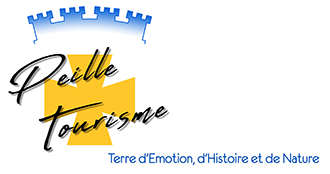History of Saint-Martin de Peille district
The neighbourhood is also known as “Les Lacs” (the term is said to come from the French expression to describe a winding road, called “lacets”, or shoelaces) and is located at the foot of the western slope of Mont Agel overlooking the neighbourhood from an altitude of 1200m, and providing it with many streams flowing down its limestone slopes, such as the Faïssé or the Figourn. It boasts remarkable flora, boosted by a Mediterranean and mountainous climate, as seen in its evergreen oaks and chestnuts, its crocuses, bellflowers and lavender, blue thistle, spurges, or turban lily.
The human occupation of this territory is ancient : as early as prehistoric times, the ridges provided populations of hunter-gatherers with natural shelters they fortified with small stone walls: these are called « castellaras » : There are some well-preserved remains of these on Mont Rastel, where human remains dating from this distant period were found in a cave at an altitude of 645m, on Porchiera summit overlooking Galembert valley and affording a vantage point on the path from Peille to La Trubie, on Clapissa summit, or on Caussinière summit. These were also used as lookout posts and were sometimes destroyed in ancient times by the Romans who wanted to weaken the resistance of mountainous Celto-Ligurian populations under Augustus, who eventually erected the La Turbie trophy to commemorate his victory over these tribes.
Gallo-Romans certainly inhabited this zone of passage between Peille and La Turbie between the backcountry and the Via Julia, a strategic East-West route connecting Italy and Provence. The small lake bridge was on the only bridle path connecting the large east-west communication axis of the Roman empire. This path was still used until the Peille-La Turbie road was opened in 1923.
Saint-Martin turned into a residential neighbourhood where hundreds of villas nestled in the lush countryside share the slopes of Mont Agel: these homes, occupied traditionally by Monaco residents looking for a relaxing holiday destination, are now also becoming home to younger residents who work on the coast and who prefer, when evening falls, to retire to the hills behind Guerre pass.
